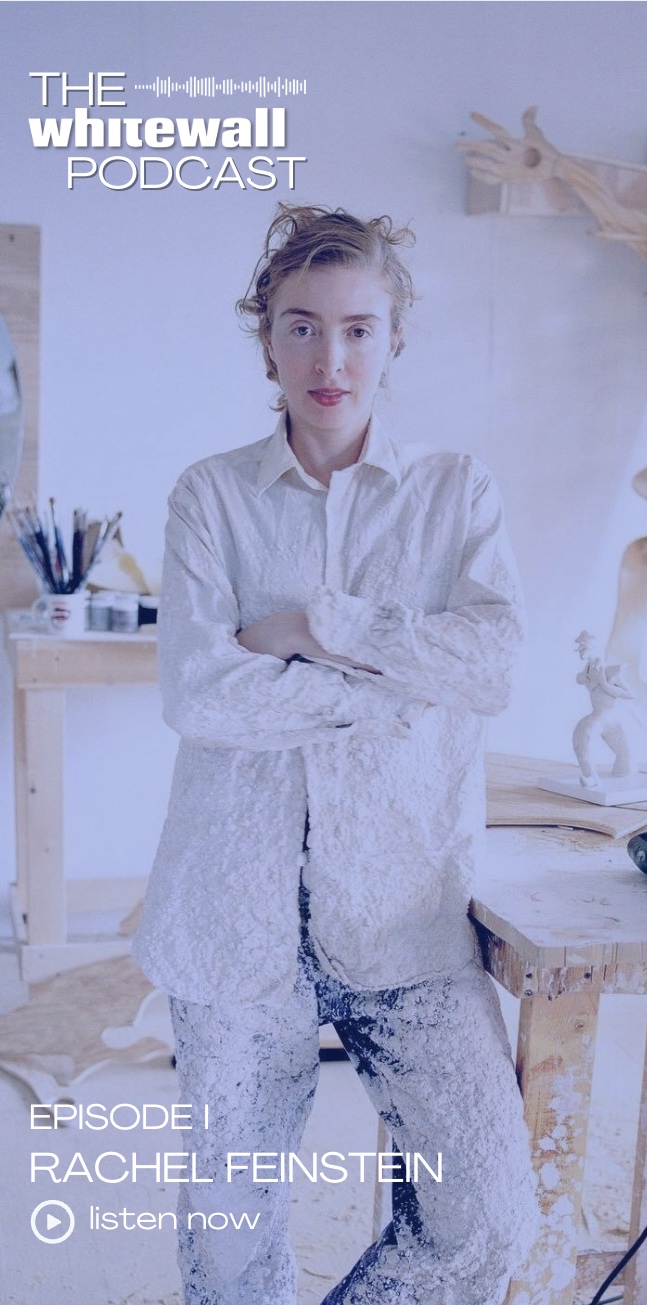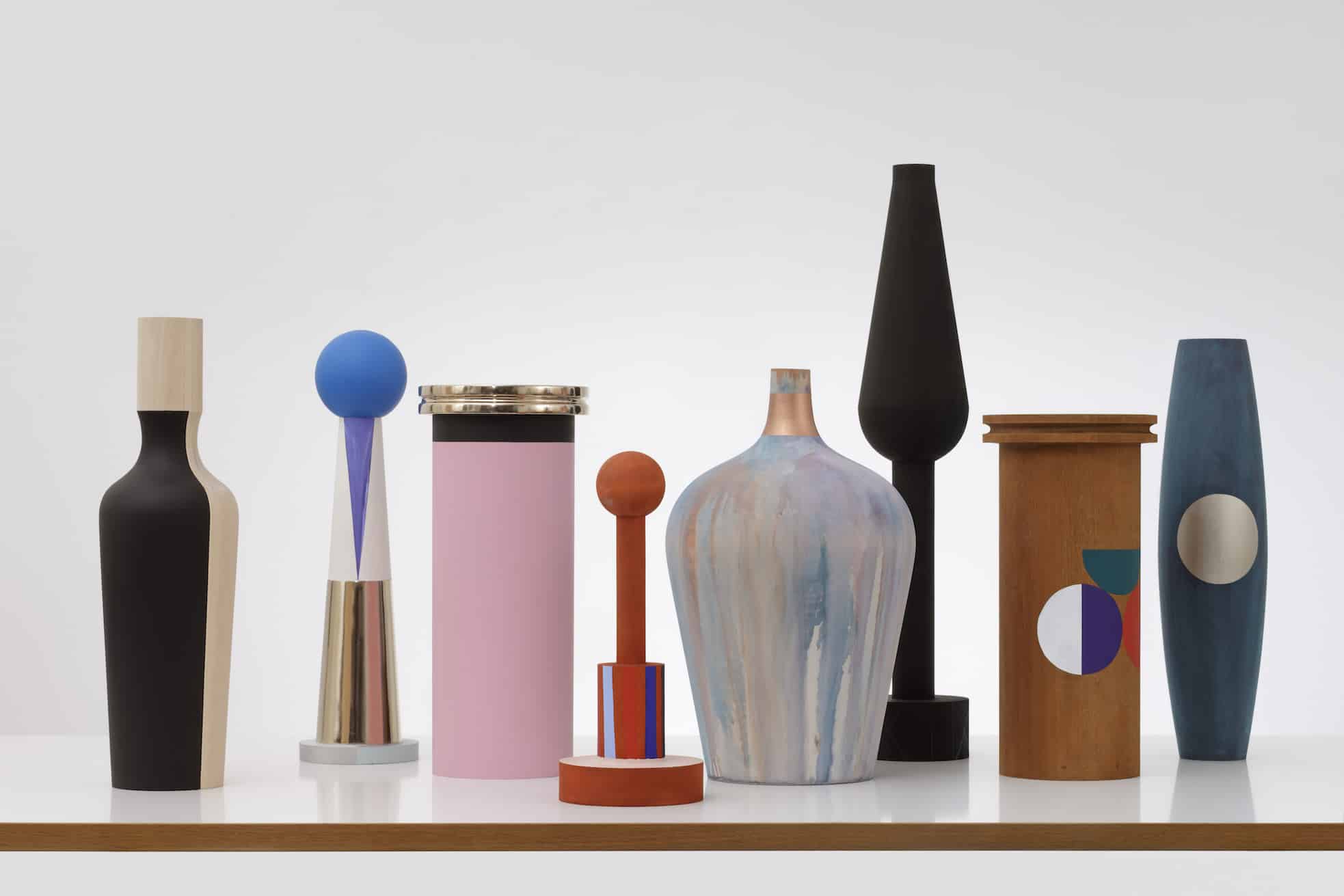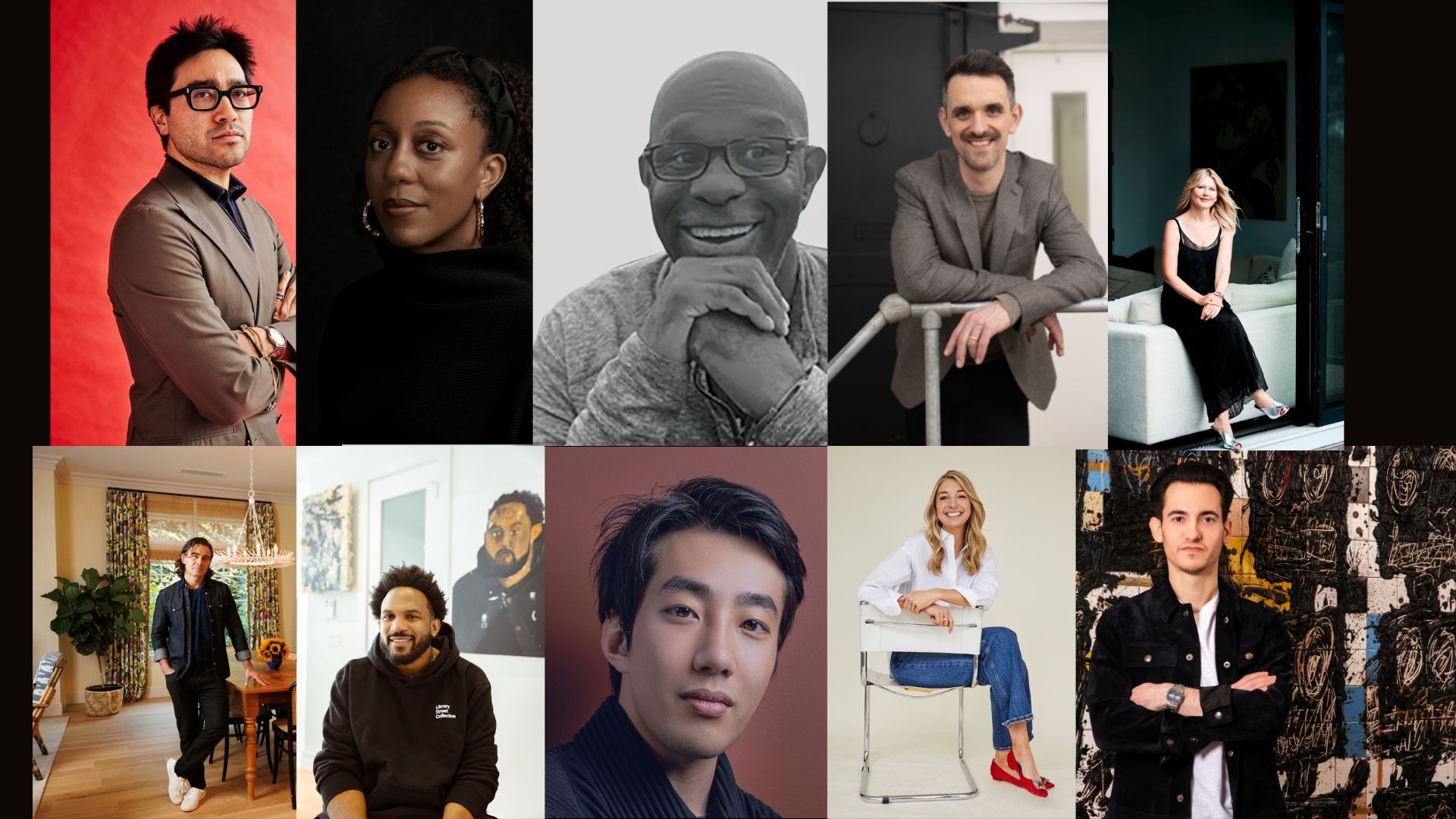This week, The Armory Show, open to the public through Sunday, presents 183 exhibitors from 32 countries at Pier 90 and Pier 94. The 2020 fair includes expanded curatorial projects comprised of Focus, Perspectives (at Pier 90), and Platform sections. Participating galleries, including 30 first-timers, offer a wide variety of thematic and visual material, ranging from 1970s photographs to a conceptual timepiece.
Dawoud Bey’s Harlem, U.S.A, 1975-1979 is on view in New York for the first time since its debut in 1979. The black-and-white photographs that line Sean Kelley’s booth feature individuals from the community of Harlem. Remarkably, these decades-old portraits feel contemporary: the relationships and exchanges captured are as alive as ever. By suspending individual moments in photographic memory, Bey preserves the collective experience of this historic neighborhood.
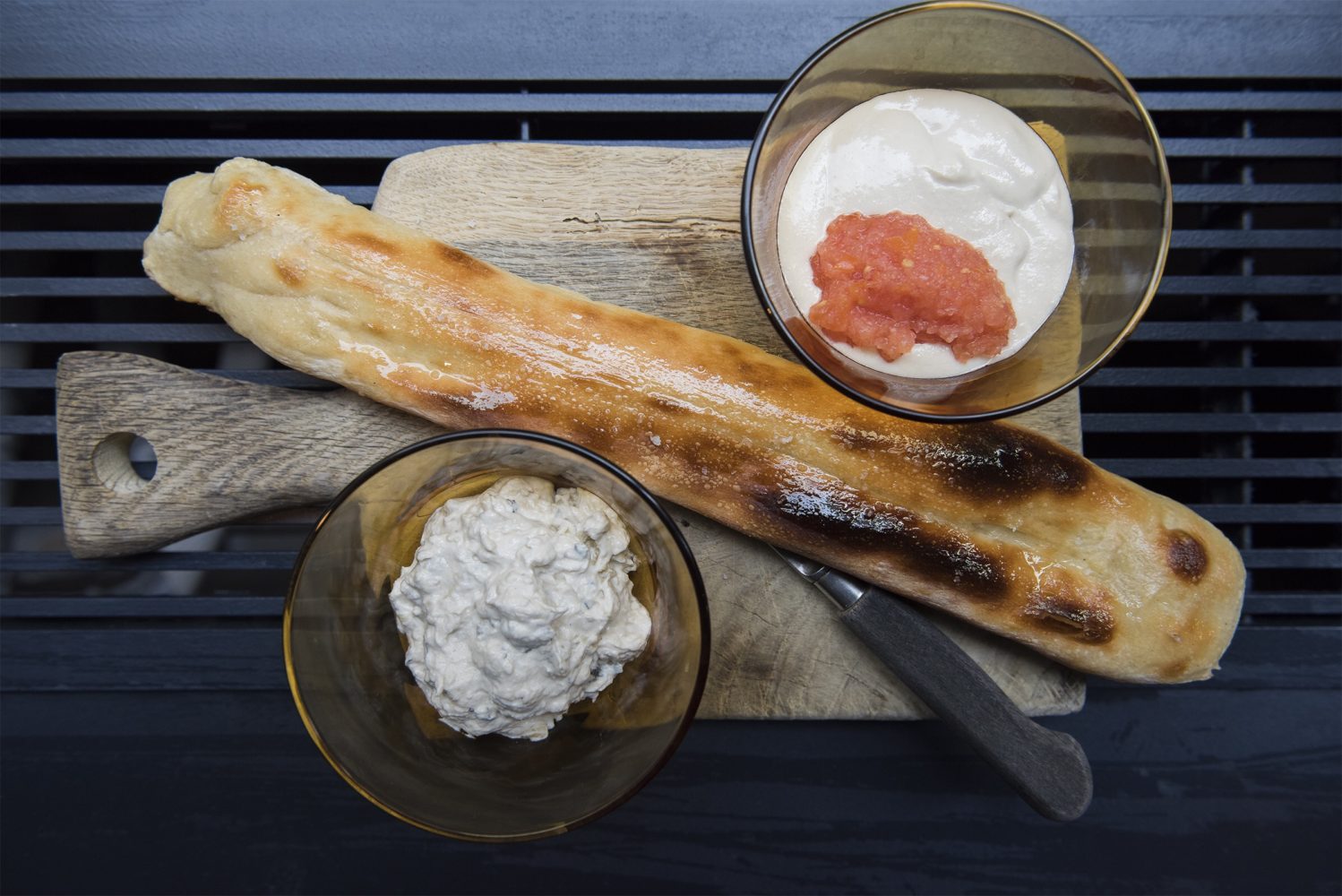 Courtesy of Balagan Paris.
Courtesy of Balagan Paris.
Mel Kendrick’s looming wooden piece, Sculpture No. 4, is presented by David Nolan Gallery. There in a corner, Kendrick’s hulking, angular work stands alone, dominating the space around it. This nine-foot tall piece, originally from a series made in the 1990s, was cut from a single block of wood.
In the Focus section, notable works included a solo show at Jack Bell Gallery displaying paintings by multimedia artist Lavar Monroe. Inspired by graffiti murals from his childhood in the Bahamas, Monroe’s lively figures, painted in unapologetic red, seem to cry out in protest of the suffering they face. Through his fierce visual language, Monroe grapples with his personal trauma while challenging systematic oppression.
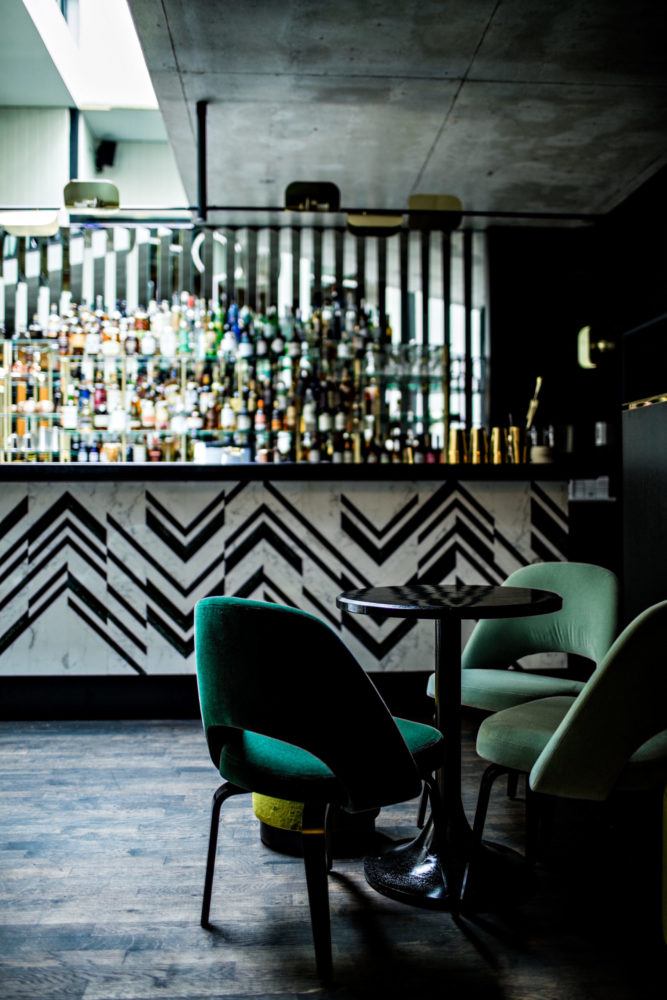 Courtesy of Danico.
Courtesy of Danico.
Part of an ongoing series entitled, “National Times,” Agustina Woodgate’s conceptual works shown at Spinello Projects, caught our eye and made us think. The artist uses disintegration and erasure to confront the ways systems of power shape quotidian experience. Workout consists of eight synchronized clocks under the command of a small digital clock above. At first glance, this piece seems only to recreate power structures rather than critique them; however, the horological hierarchy is disrupted over time as the clocks’ minute hands slowly erase their numerals, eventually making the orders from the master clock obsolete. $7.25 similarly redefines the relationship between time and labor, composed of disintegrated $7 bills displayed in hourglass-shaped containers, and a quarter embedded in each pedestal.
In the Platform section, Summer Wheat’s Sand Castles, presented by Shulamit Nazarian, is another work that cannot be missed. Lucky for fairgoers, it’s hard to do so: Wheat’s monumental painting is 16 feet long. Reminiscent of an ancient tapestry, this brightly colored and highly textured beach scene depicts a group of women engaged in everyday acts of labor. By distorting and enlarging the figures, Wheat elevates what is usually trivialized––women’s work––and sends an uplifting message of communal feminine cooperation.
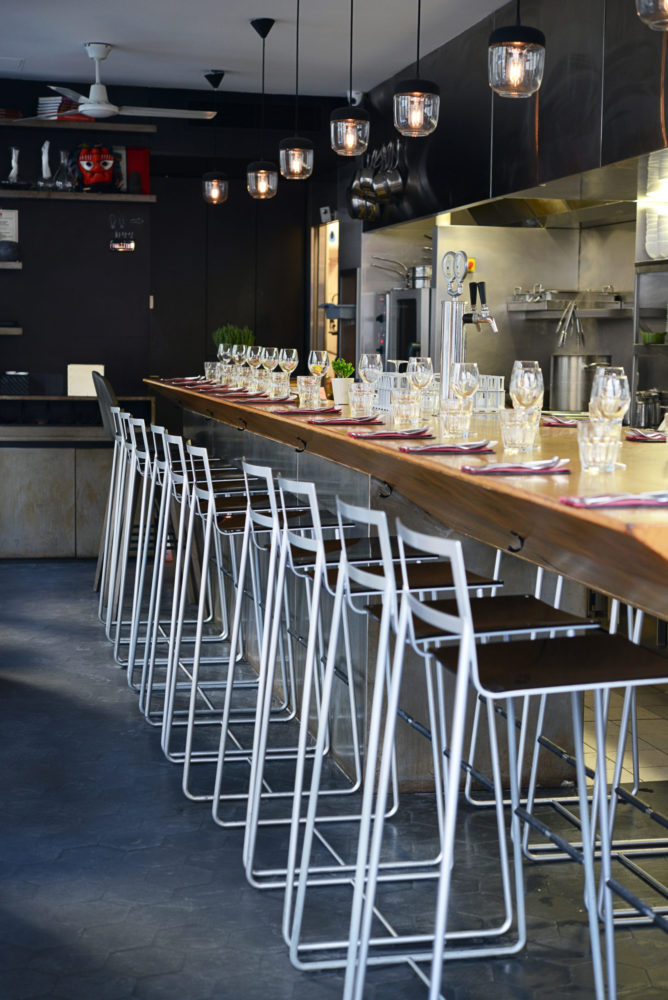 Photo by Nicolas Villion, courtesy of Pierre Sang.
Photo by Nicolas Villion, courtesy of Pierre Sang.
Another highlight of the Platform section was This is Heaven by the collaborative pair Nathalie Djurberg and Hans Berg, presented by Tanya Bonakdar Gallery. Fairgoers become immersed in the surreal work as they enter a dark, theatrical booth populated by bizarre bird sculptures. On one wall, four grotesque stop motion films, each about six minutes long, play back to back. These carnal films veer on the side of repugnant, yet they remain so gripping that it is impossible to look away. Although distinct, the darkly comedic films are strung together by a common thematic thread: the tug of war between the individual’s desires and society’s moral code.
Following the clack-clacking of a typewriter, we found ourselves in Cristin Tierney Gallery’s booth where performance artist Tim Youd was retyping Sylvia Plath’s The Bell Jar onto a single piece of paper. As he types, reenacting the creation of fictional works, relics of his previous performances hang on the walls––damaged, ink-stained pages. This work is a continuation of his 100 Novels project, in which he types out other American classics.
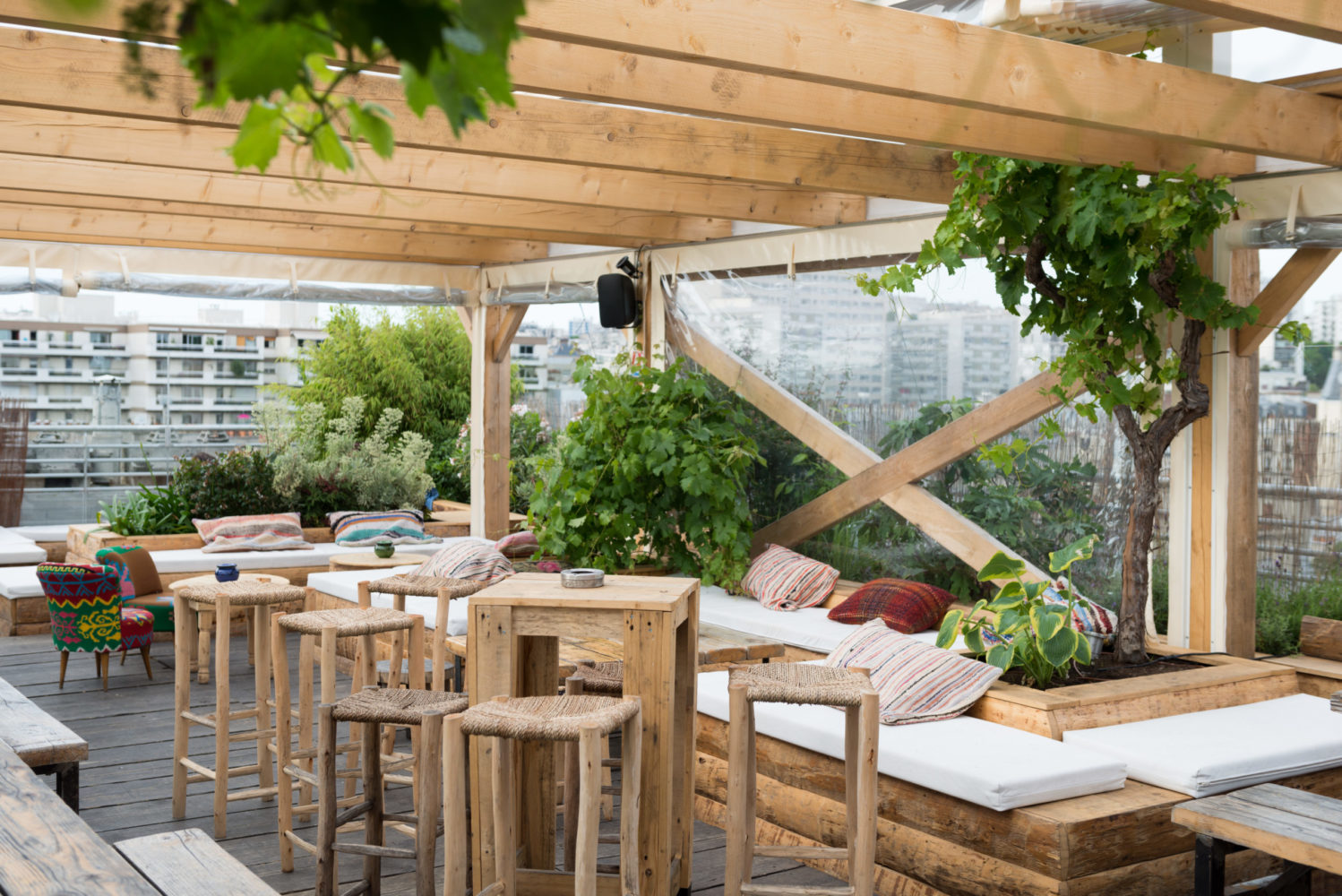 Photo by Studio Cui Cui, courtesy of Le Perchoir.
Photo by Studio Cui Cui, courtesy of Le Perchoir.
Tucked away in Pier 90, we were captivated by Howard Tangye’s whimsical paintings presented by London-based State. Employing only the naked line and pale shocks of color, Tangye’s portraits are a study of the body at rest. Each painting’s sketchy, elusive form emits a quiet yet unmistakably sensual energy. They exist at a moment of hesitation that, like holding your breath, makes it feel easy to lose yourself.







